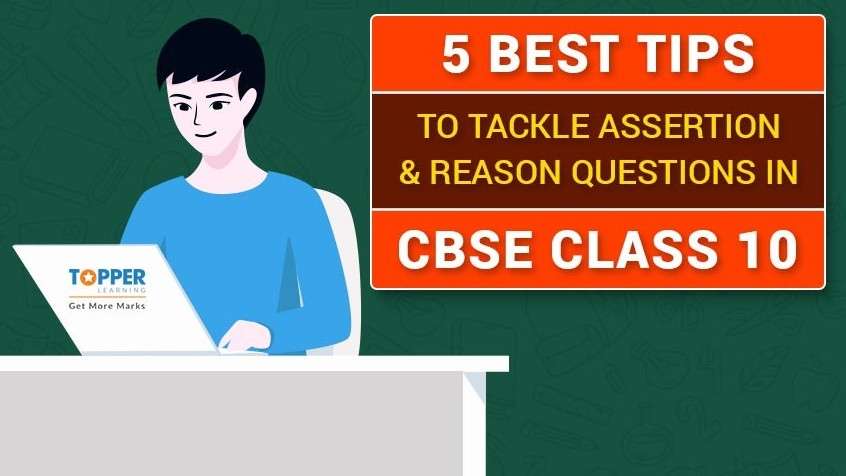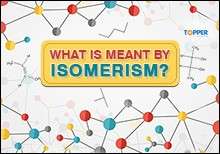5 Best tips to tackle assertion and reason questions in CBSE Class 10

The questions can be tricky, but you can successfully answer assertion questions with our 5 useful tips.
By Topperlearning Expert 19th Feb, 2020 | 11:39 am
ShareFor years, assertion and reason questions have been part of major competitive exams such as CAT, MAT, SAT etc. in India. From the academic year 2023-2024, you will find this type of verbal reasoning question in CBSE Class 10 question papers. So, let’s understand how to answer these questions so that you can score maximum marks in your CBSE Class 10 board exams 2024.
What is an assertion and reason question in CBSE Class 10?
It is a question type that consists of two statements – One is an assertion statement and the other is a reason statement. You have to read and absorb the information in the assertion statement and the reason statement to understand the concept being discussed. Based on your understanding, you are required to make the correct choice from the options given in the question.
Tricks to answer assertion–reason questions in CBSE Class 10 exams 2024
5 best tips and strategies for CBSE Class 10 students to answer assertion questions are given below:
1. Take time to read your CBSE Class 10 exam assertion–reason questions
If you rush through the assertion questions, you may not be able to answer it correctly. So, read the question carefully to understand the assertion statement. Then, figure out whether the reason statement is true or not. Once you feel you have found the correct answer, read both the given statements once more. This time, if you feel confident about your answer, go ahead and select the option that you think is right. Also, before your exams, sleep well so that you are not drowsy and unfocussed at the time of answering questions.
2. Think of each statement independently
Evaluate the given statements independently to figure out the correct answer.
Here are the different scenarios for assertion–reason questions:
- Both assertion and reason are false.
- Both assertion and reason are true, but the given reason gives an inaccurate explanation.
- Both assertion and reason are true, and the given reason gives an accurate explanation.
- The assertion is false, and the reason is true.
- The assertion is true, and the reason is false.
In certain questions, the reason provides the correct explanation for the given assertion statement, while in others it does not. If your concepts are clear, you will be able to quickly spot the inaccuracy in the explanation and select the correct answer. You need to think logically and use your conceptual understanding to analyse the scenario before answering assertion questions. For revising the concepts present in your CBSE Class 10 syllabus chapters, you can use CBSE Class 10 study materials such as NCERT solutions and concept videos.
3. How to solve CBSE Class 10 assertion and reason-type questions?
Let’s take a closer look at an assertion and reason-type example question to understand how to answer such questions.
Example Question:
- Copper wire has low resistivity. (Assertion Statement)
- Copper is a bad conductor of electricity. (Reason/Explanation)
You are required to choose the correct answer from the following options:
Option 1
Both A and B are True.
Option 2
Both A and B are False.
Option 3
A is True and B is a correct explanation of A.
Option 4
A is True and B is an incorrect explanation of A.
Option 5
A is False, but B is True.
Here is an analysis of the answer options given in the example question:
- In the example above, the correct answer is Option 4. Here, if you have thoroughly studied the chapter called Electricity in CBSE Class 10 Science Physics, you will remember the concept of usage of copper wires for electricity transmission.
- In the question, A is True because copper wires have low resistivity. B is False because copper wires are good conductors of electricity. So, you can rule out Option A and Option B.
- In Option 3, B is given as a correct explanation of A which means copper wires have low resistivity because they are bad conductors of electricity. If you have grasped the concept, you will realise that because of the low resistivity of copper wires, they are good conductors of electricity. This fact makes Option 3 incorrect and Option 4 correct.
- Option 5 is not the answer because the assertion statement in A is true.
4. Practising assertion questions with CBSE Class 10 practice tests
Assertion questions can be confusing. You need to know the meaning of the options available to get the answer right. Here, practice tests can be useful. Just reading tips on answering may not be effective. Tips are great for developing your own strategies to tackle the exam questions. If you practise CBSE Class 10 assertion questions, you will improve your thinking abilities. Once your practice test results are available, check whether you happen to lose marks due to lack of conceptual knowledge, overconfidence or lack of focus resulting from nervousness.
5. Revise concepts with CBSE Class 10 sample papers
To practise assertion-based questions, you can refer to the latest sample papers. The practice questions along with the answer keys in the sample papers will help you to polish your skills. CBSE Class 10 sample papers carry reference questions and answers based on your Class 10 syllabus. Your conceptual clarity will also improve when you revise the questions and answers from various CBSE Class 10 sample papers for subjects such as Physics, Chemistry and Biology.
CBSE introduced assertion-based and paragraph-based questions from the academic year 2019-2020 and will continue for the CBSE Class 10 board examinations 2024 as well. We hope that these tips and strategies to attempt assertion-type questions will be useful when you appear for your examinations.
Also, check out this useful video on assertion and reason type questions in CBSE Class 10
For Class 10 exam preparation materials such as sample papers, practice tests, NCERT solutions etc., you can visit TopperLearning.com
Important Resources
- Education Franchisee opportunity
- NCERT Solution
- CBSE Class 9 Mathematics
- NCERT Solutions for class 10 Science
- Sample Papers
- CBSE Class 9 Science
- NCERT Solutions for class 10 Maths
- Revision Notes
- CBSE Class 10 Hindi
- CBSE Class 10 English
- CBSE Class 10 English
- CBSE Class 10 Social Studies
- CBSE Class 10 Science
- CBSE Class 10 Mathematics
- Career In Science After 10
- Career In Commerce After 10
- Career In Humanities/Arts After 10
- NCERT Solutions for Class 10
- NCERT Solutions for Class 11
- Business Studies Class 12 CBSE project





